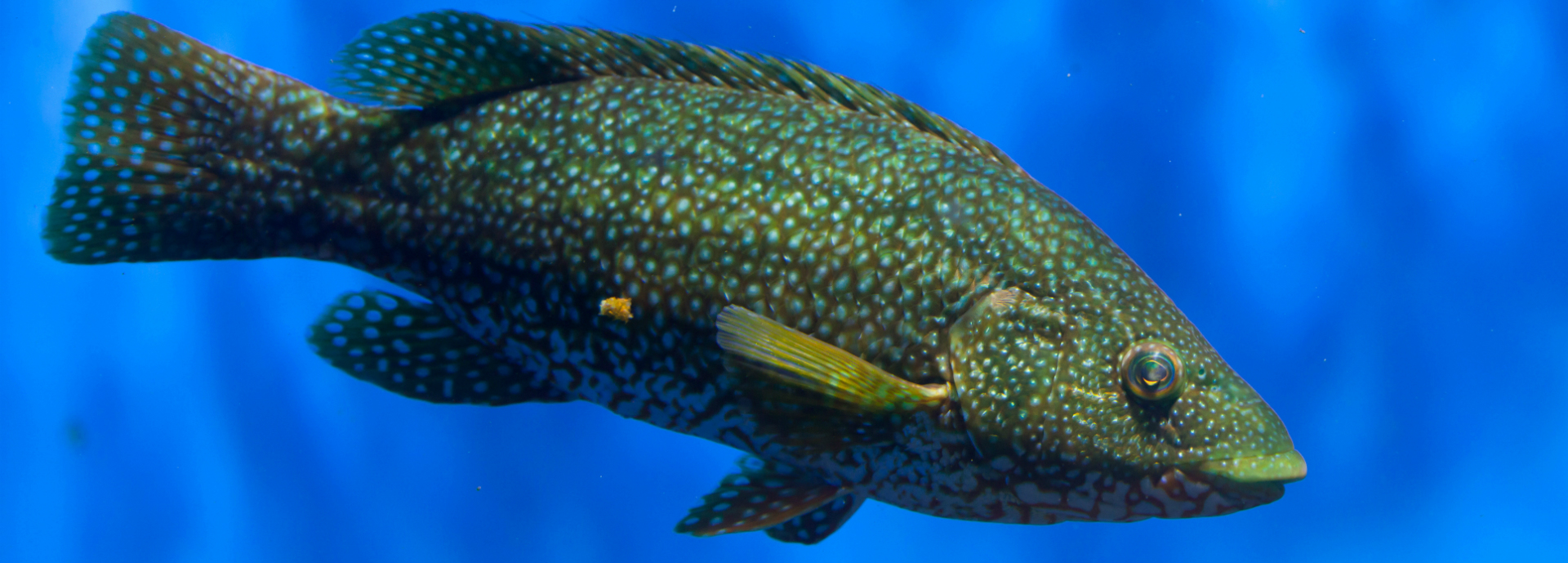A project involving the University of Stirling and two leading fish farms has reached a major milestone in its drive to tackle sea lice in salmon.
The University’s world-renowned Institute of Aquaculture has supported Marine Harvest Scotland and Scottish Sea Farms to produce farm-reared ‘cleaner fish’, which eat naturally occurring external parasites – such as sea lice – from salmon.
Over six years, the project team has bred wild-caught Ballan wrasse (Labrus bergylta) and raised the offspring from egg to adults of reproductive age. Now, in what is believed to be a world-first, those same offspring have produced their own eggs, which have successfully hatched, completing the lifecycle of farming wrasse in a controlled environment.
The team has also gone on to successfully wean the wrasse larvae and fry from live food to a dry diet – another key milestone and one that will give salmon farmers more control over the health and nutrition of farmed wrasse.
Dr Andrew Davie, Senior Lecturer, and Professor Herve Migaud, Personal Chair, both of the Institute of Aquaculture, collaborated on the study.
Dr Davie said: “The closing of the lifecycle of Ballan wrasse in captivity marks a major milestone in our collaborative research programme on cleaner fish domestication.
“Over seven years of research and development has been undertaken to get us to this stage. The long-term commitment to the programme by the commercial partners has been essential to help realise this year’s groundbreaking results, though there remains a lot more work to do.
“We currently have five MSc students, three PhD students and three postdoctoral researchers all focussing on different challenges facing wrasse production and management to help the industry realise its goal of a sustainable supply of healthy and effective cleaner fish.”
Breakthrough
The experts hope that, over the long term, the breakthrough will help meet the growing demand for cleaner fish as Scotland’s salmon farmers increasingly seek to control sea lice through non-medicinal, environmentally friendly approaches.
Currently, the majority of wrasse used as cleaner fish is wild-caught, in accordance with guidelines specified by Marine Scotland, RSPCA Assured and local fishery boards. However, it is the sector’s ambition to become self-sustaining and use only farmed stocks of cleaner fish – a goal that is now within grasp thanks to these latest advances.
Marine Harvest Scotland’s Hatchery Manager, Paul Featherstone, said: “Ballan wrasse provides highly effective, highly natural sea lice control and as such is in huge demand.
“With this breakthrough, we now have proven procedures for breeding, weaning and rearing wrasse, which will both help ensure farmers have a more secure, controllable supply and reduce reliance on wild stocks.”
Ralph Bickerdike, Head of Fish Health at Scottish Sea Farms, added: “These landmark breakthroughs are the result of many years of collaborative research, involving a significant investment of time and money by farmers and academic partners intent on developing natural solutions to the control of sea lice.”
The University, along with the salmon farms, entered into the multi-million pound collaboration back in 2011 with support from Innovate UK (formerly the Technology Strategy Board), then more recently the Scottish Aquaculture Innovation Centre and feed specialist BioMar.
Background information
Media enquiries to Greg Christison, Communications Officer, on 01786 466 687 or greg.christison@stir.ac.uk

